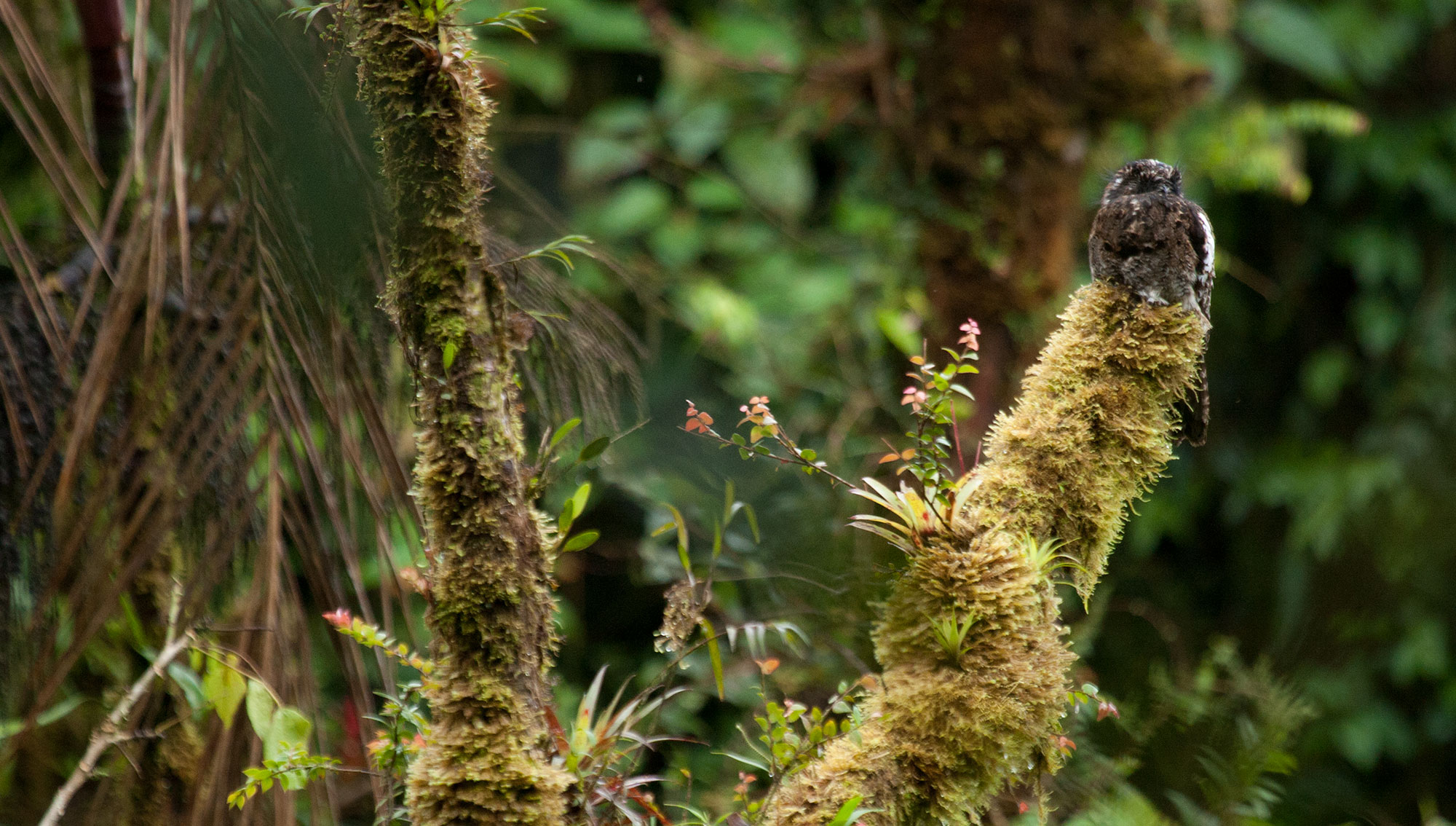The Potoo Bird
Strange Master of Camouflage
You notice anything unusual about the photo of tangled Amazonia trees below? Look for the bird - the potoo bird.

You probably see this bird. But if you don't look at the close-up in the picture below.
There are seven species of this bird from the new-world family Nyctibiidae, related to nightjars, and they each are quite good at pretending to be tree stumps.
Below is a closer look at the same bird, a juvenile Common Potoo.

Close-up, you can easily see that it's not a tree stump, but a living, breathing creature, the Potoo Bird. Look at how this juvenile chose a broken tree branch that he could fit right into.
How Many Potoo Bird Species Exist?
There are seven species of potoos, and they range from Central America to the warm parts of South America.
Long-tailed potoo, Nyctibius aethereus. This species ranges in the Amazon Basin, with a second population inhabiting the Atlantic forest of South America.
Rufous potoo, Nyctibius bracteatus. This tiny potoo is found primarily in Ecuador, but a small population exists on the Peru-Bolivia border.
Great potoo, Nyctibius grandis. This largest of all nightjars ranges from Mexico to the Amazon, with a separate population in the South American Atlantic forests.
Common Potoo, Nyctibius griseus. The Common Potoo ranges through much of Latin America, and is easily the most widespread.
Northern Potoo, Nyctibius jamaicensis. The most northern of all Potoos, the Northern Potoo ranges in Mexico and northern Central America, with populations in the Caribbean islands of Jamaica and Hispaniola.
White-winged Potoo, Nyctibius leucopterus. The most mysterious of all potoos, this one ranges deep in the Amazon.
Andean Potoo, Nyctibius maculosus. The Andean Potoo is the high-elevation species of the lot, and is found in the Andes Mountains from Columbia to Bolivia.

A Great Potoo sleeping on a massive tree that overhangs the Napo River in Ecuador.
What do Potoos Eat?
Potoos are nocturnal insectivores, acting very much like flycatchers of the dark. They sit on tree branches, and fly out to capture moths and other night-flying insects.

This Andean Potoo is perfectly camoflauged.
Do Potoos Have Nests?
Potoos lay their eggs in the same kind of tree stumps they hide in during the day. Both monogamous parents share duties in raising their young.
